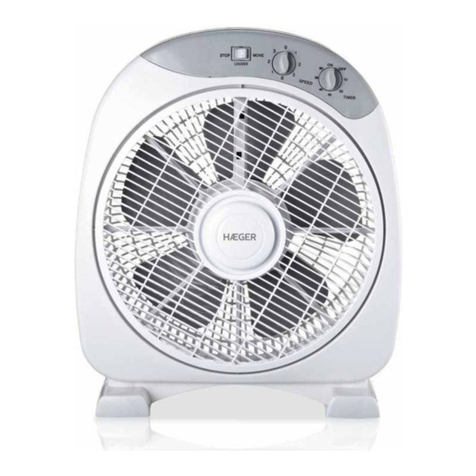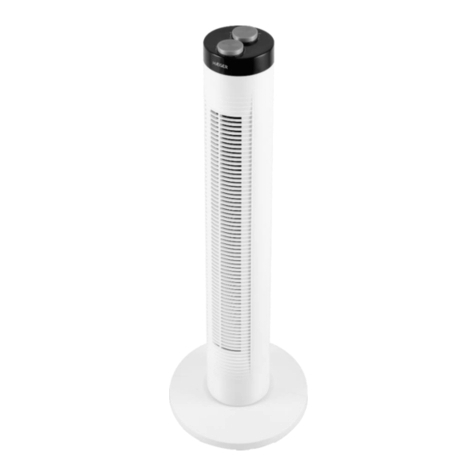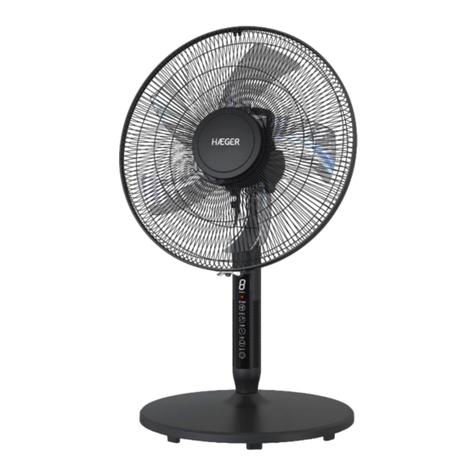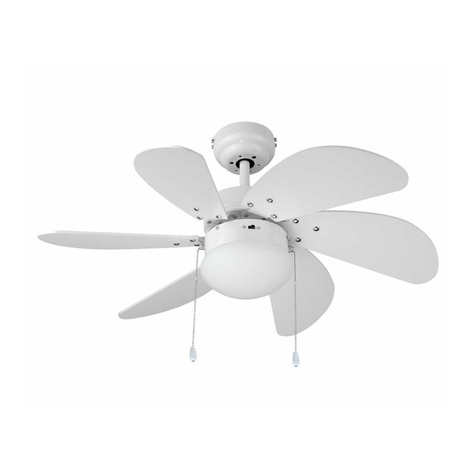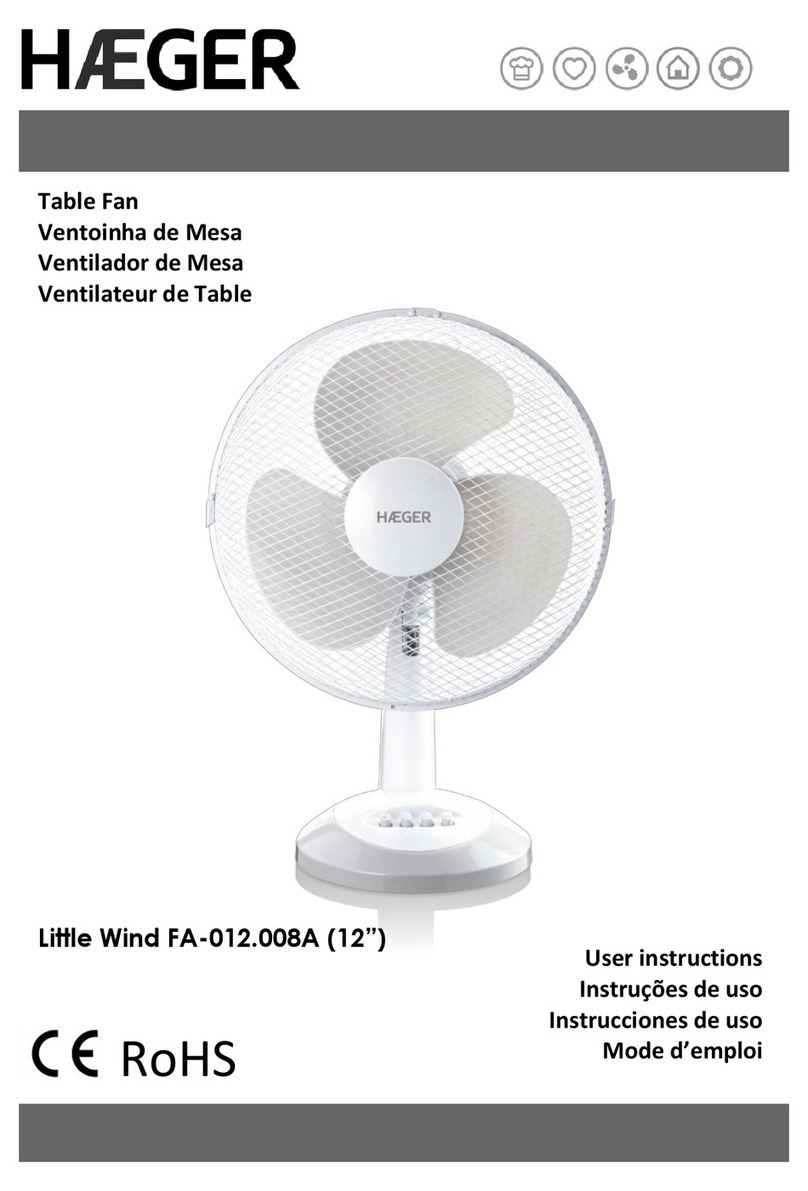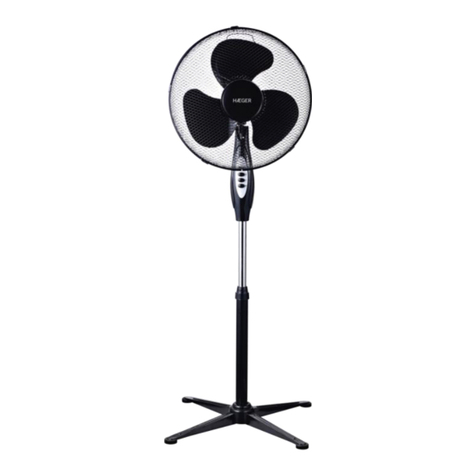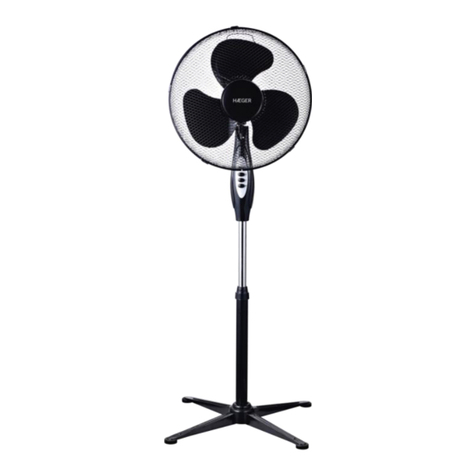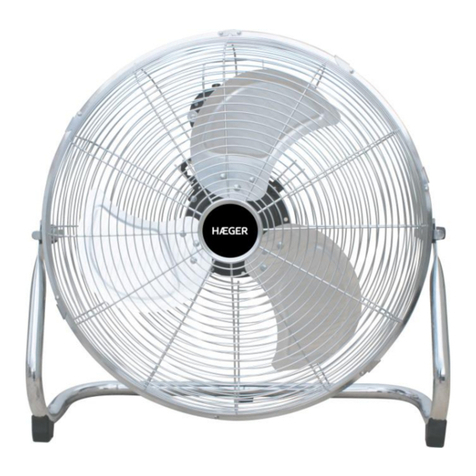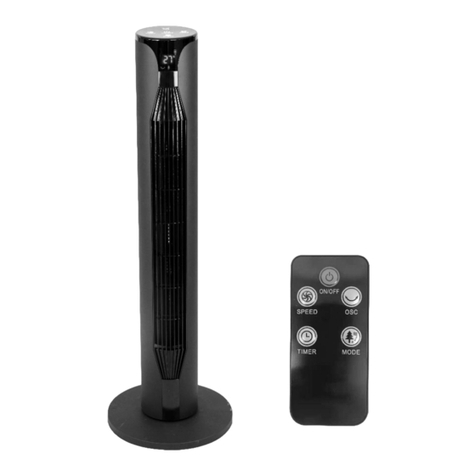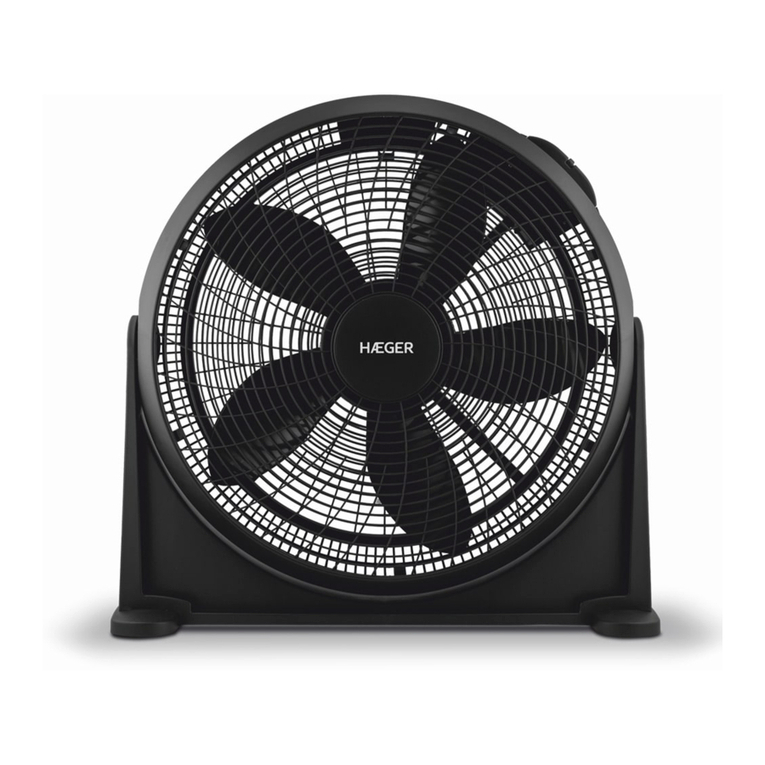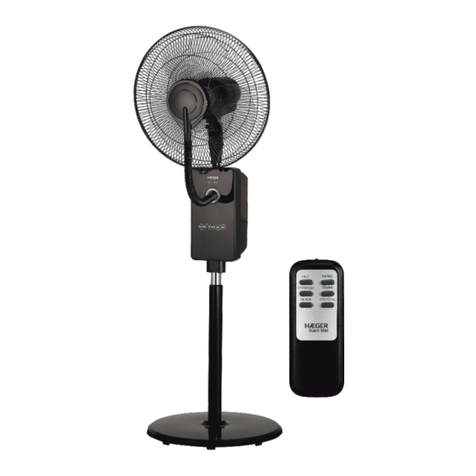English
4 Instructions for use
Security Measures
•Do not install the fan in damp rooms (bathrooms etc.)
•Use the product only in inhabited areas not subject to moisture.
•Do not fix the unit to wet surfaces (painted) or metal surfaces that can
conduct electricity.
•The location of appliance must allow a secure connection to the power
supply.
•For fixing only screws must be used (do not use wire or other materials).
•Keep a minimum distance of 2.3 meters between floor
and ceiling fan and 1 meters of the walls.
•The electrical system must comply with local regulations.
•To avoid the risk of electric shock, connect the grounding fan appropriately.
•Be careful when working in the vicinity of the fan blades in operation.
•IMPORTANT. During installation and maintenance of the appliance switch
off main power. It is not enough merely to turn off the switch.
•Ensure that there are no current pipes or wires behind the mounting points.
Steps to follow for assembly and installation of fan
1. Turn off power at fuse box to avoid possible electrical shock.
2. Install the mounting bracket (hook) to
the ceiling, using the screws provided
and taking all the safety measures
mentioned above. The mounting plate
should be able to hold a weight of at
least 20.8kg.
NOTE - Proper care must be taken when
mounting to concrete ceilings. For safe
mounting, these ceilings may require
stronger screws and plastic plugs or
anchors than supplied with the product.
3. Procedure to install fan mounting rod:
a) Insert the upper and lower canopy
into the mounting rod before starting
the motor assembly(a), since these
serve to cover the electrical
connections. Insert the electrical
cables through the hallow shaft. The wires are inserted from the bottom
to top.

